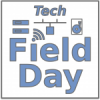Reading Time: 4 minutesThe procedure for upgrade to VMware vSphere 5.1 is quite similar to the upgrade path to vSphere 5.1 (and almost similar also to the upgrade path to vSphere 5.0) and is well described in the specific guide (vSphere Upgrade Guide). And first to all, you have to analyze the pro and the cons of a product upgrade, for more information see also: VMware vSphere 5.5 – Upgrade or not upgrade? You have also to consider (particularly for small enviroment) if apply an upgrade or rebuild. Anyway, some points are quite common for each major vSphere […]
Browsing Posts published in January, 2014

Reading Time: 2 minutesI’m really honored to have been invited to as a delegate for third edition of Virtualization Field Day (#VFD3) event, scheduled in March 5-7, 2014 in California (Silicon Valley). Virtualization Field Day is one type of the Technical Field Day events, organized by Stephen Foskett and his team, with the purpose of bring together innovative IT product vendors and independent thought leaders to share information and opinions in a presentation and discussion format. Virtualization Field Day (VFD) focuses on server and desktop virtualization and management technologies and will be really interesting be part of this event […]
Reading Time: 4 minutesIn the previous post we have talk about the VMware Horizon View Event database and how purge the old data in order to free some space. You can have similar issue also with the VMware vCenter Server database, considering that it can continuous grow due to the statistics and also due to the events/tasks. In really small system a simple solution could be re-install a fresh version of vCenter Server (maybe during an upgrade) and re-create all the configuration stored only in the vCenter Server database. But in several cases this approach is not realistic. […]
Reading Time: 3 minutesIn an installation of VMware Horizon View one requirement is the VMware Composer database to keep track of the various pools with linked clones. But this is the only mandatory DB (if you have linked clones), because for the various View Connection Servers there isn’t any strictly database strictly requirement, since they exchange and share data via a specific data structure based on Active Directory Lightweight Mode (actually an LDAP tree replicated between each replication server). But in real scenario, it becomes useful, from the management point of view, set up a shared database for […]
Reading Time: 4 minutesAfter the recent announce of v3.8 of NAKIVO Backup & Replication, now it’s the turn of v3.9 that introduce Multi-Tenancy, Self-Service, and Dynamic License Allocation features. New features enable managed services, cloud, and hosting providers to introduce VM Backup-as-a-Service (BaaS), Replication-as-a-Service (RaaS), and Disaster-Recovery-as-a-Service (DRaaS) to their clients, while enterprises can easily manage VMware ESXi backup, replication, and recovery for multiple sites from a single pane of glass. With the extended products support introduced in v3.8, that include VMware vSphere 5.5, Microsoft Windows 8.1 and also Microsoft Windows Server 2012 R2, this solution is become […]
Reading Time: 3 minutesVeeam Certified Engineer (VMCE) certification is documented proof that an engineer possesses the necessary level of expertise to correctly architect, implement and configure Veeam Software Solutions. This certification is a great investment for an IT professional looking to increase productivity, reduce operating costs, propel personal career advancement and achieve industry recognition. It’s a new certification announced by Veeam some month ago in order to bring a technical certification level in the existing partner’s related certifications (sales and technical pre-sales), similar at the (initial) certifications in the VMware partners program. Note that each VMCE is related […]
Reading Time: 2 minutesOne possible issue during an upgrade to VMware vSphere 5.1 or 5.5 (but also in a new installation) is related with the introduction of the the SSO (introduced in vSphere 5.1) component in vCenter Server that handle the authentication across the different vCenter Server components, but also against the users. In some cases you may have the following issues during the user autentication: You can log into vCenter Server 5.1 or 5.5 with the vSphere Client or vSphere Web Client only with local users Logging into vCenter Server 5.1 or 5.5 using the vSphere Client […]










